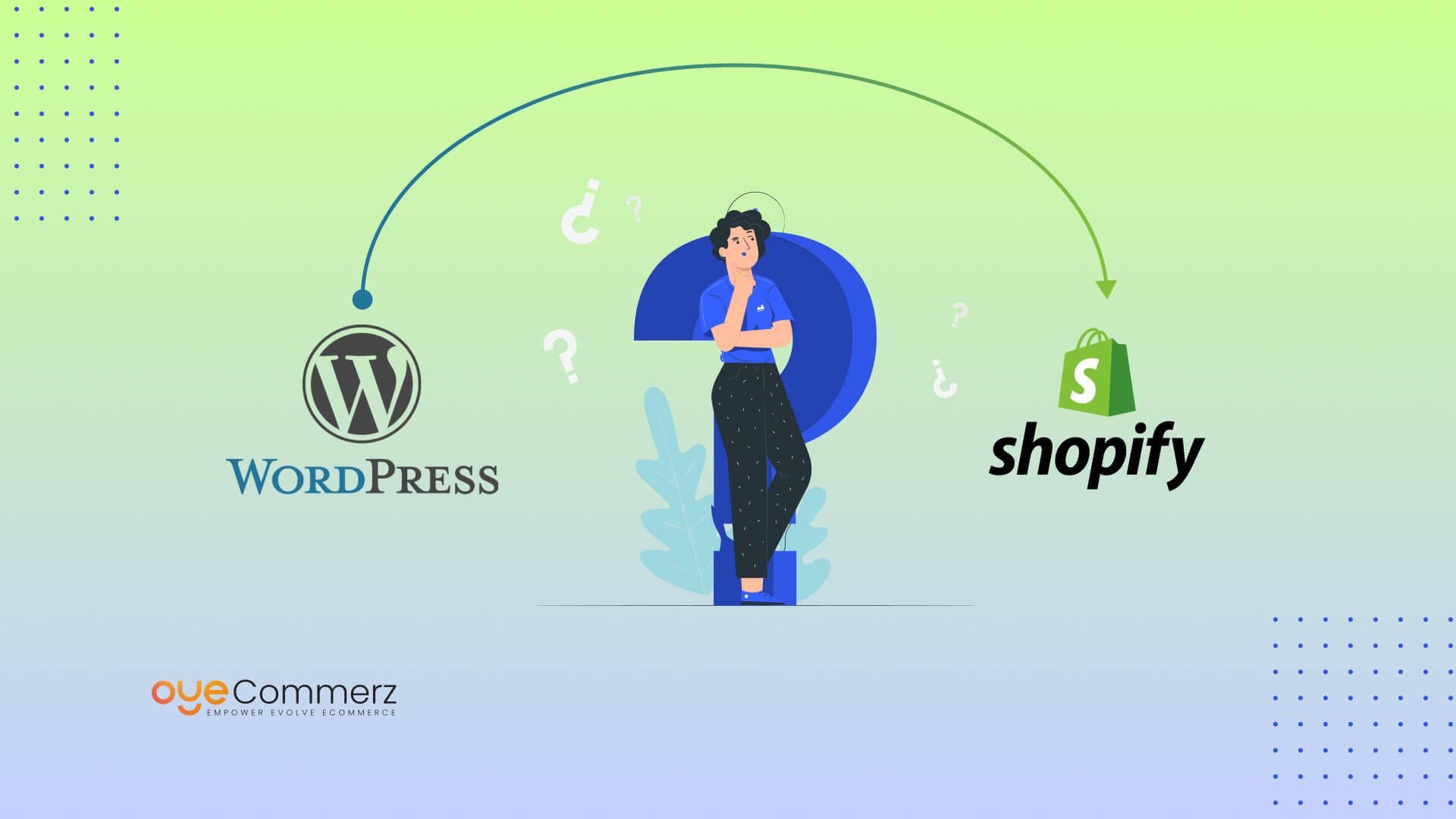Shifting from WP to Shopify is an exciting step in optimizing your online store operations. As companies expand, choosing a solution that aligns with growth potential, user experience, and flexibility becomes crucial. Shopify is widely recognized as a favorite for online merchants, providing unmatched flexibility, data protection, and ease of use. In this guide, we’ll explore why this migration is a game-changer, highlight the benefits, and share practical tips to ensure a smooth transition.
1. Why Migrate from WP to Shopify?
The combination of WordPress and WooCommerce, continues to support countless e-commerce platforms. Nevertheless, as companies expand, challenges like plugin dependency, security vulnerabilities, and technical complexities often obstruct progress. Shopify, specifically created for e-commerce, eliminates these issues with an comprehensive, user-friendly platform. Statistics supports this transition—Shopify powers over 4.4 million websites globally, with a documented 10% boost to sales performance for numerous merchants post-switch.
2. Key Benefits of Shopify for E-commerce Success
Shopify’s robust ecosystem caters for scaling businesses. Its notable features include:
- Effortless Design Flexibility: Shopify offers over 80 professionally designed themes.
- Integrated Tools: Capabilities such as Shopify Payments and built-in SEO streamline operations.
- Global Reach: Multi-currency support and localization features empower businesses to expand internationally.
Additionally, Shopify delivers an availability percentage of 99.98%, guaranteeing your store remains accessible.
3. Preparing for WordPress to Shopify Migration
Prior to starting the migration process, assess your current store. Analyze inventory details, client information, and search engine rankings. Resources such as Shopify’s Migration Kit or external tools help ease the transition. Create a comprehensive plan, ensuring all resources—item details, media files, and blog content—are ready for seamless import.
4. The Importance of Accurate Data Migration
Data migration forms the foundation for a successful transition. When migrating from WP to Shopify, focus on:
- Product Information: SKU, descriptions, and categories.
- Client Information: Emails, WooCommerce to Shopify migration order history, and preferences.
- Search Engine Considerations: Retain meta tags, URLs, and forwarding paths to maintain search rankings.
Leverage apps like LitExtension to facilitate seamless migration while reducing mistakes.
5. Tailoring Your Shopify Store to Fit Your Brand
Post-migration, customizing your Shopify store ensures it reflects your business identity. Take advantage of Shopify’s intuitive page builder to design pages effortlessly. Shopify's themes are mobile-responsive, ensuring a smooth user experience across devices—a key point, given 74% of e-commerce traffic is generated by mobile visitors.
6. How to Protect Your SEO Rankings When Switching Platforms
SEO is vital for preserving your online presence during migration. Shopify excels in SEO with clean URL structures, preloaded features, and smooth content management. Make sure you:
- Set up URL forwarding for old URLs.
- Optimize new pages with keyword-rich content.
- Use Shopify's apps Plug in SEO to track analytics after the switch.
7. Post-Migration Testing
After finishing the transfer, run detailed checks.
Review:- Page load times (Shopify delivers faster speeds compared to WordPress).
- Payment integration reliability and transaction flow.
- Mobile responsiveness.
Quality assurance guarantees your store provides a seamless shopping experience from day one.
8. Case Study of a Successful Migration
One such migration success Product data migration story is Gymshark, a sportswear company that moved to Shopify. After the switch, the company saw a 60% increase in mobile sales and reduced site downtime. This showcases the potential of Shopify in driving online business success.
9. Challenges and Solutions
Migration comes with challenges, such as information accuracy and reconfiguring custom functionalities. However, Shopify’s extensive assistance and third-party experts make overcoming these hurdles manageable. Partnering with experienced Shopify developers helps guarantee a trouble-free transition.
10. Starting Your Journey with Shopify
Migrating from WP to Shopify represents a strategic approach to online retail. By focusing on growth, streamlining operations, and enhancing the customer experience, Shopify empowers businesses to succeed in challenging industries.
Conclusion
Switching from WP to Shopify is a strategic move that can significantly boost your online business performance. With a well-structured strategy, the right tools, and professional guidance, you can achieve new success milestones.
Excited to start the journey? Reach out today to learn how our Shopify migration services can transform your e-commerce platform. Get in touch today, or consider: Is it time to seize Shopify’s advantages for your store?

Comments on “Effortless Transition from WordPress to Shopify: A Comprehensive Roadmap for E-commerce Growth”